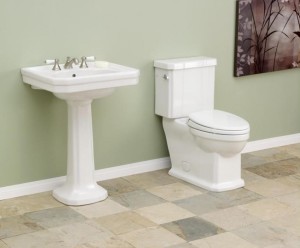 Many people would probably like to keep their septic system in the “out of sight, out of mind” category. But while wastewater and sewage aren’t exactly great dinner conversation topics, it’s not wise to ignore them completely. By paying attention to how you are treating your septic system on a daily basis and getting regular inspections and service, you can save yourself the nightmare of dealing with a septic backup or failure. Here are some tips to help you keep your septic system in top condition:
Many people would probably like to keep their septic system in the “out of sight, out of mind” category. But while wastewater and sewage aren’t exactly great dinner conversation topics, it’s not wise to ignore them completely. By paying attention to how you are treating your septic system on a daily basis and getting regular inspections and service, you can save yourself the nightmare of dealing with a septic backup or failure. Here are some tips to help you keep your septic system in top condition:
Careful what you flush. The more solids you put down your drains, the quicker your septic tank will fill up. Never flush items like diapers, tampons, cigarette butts, or paper towels. Be careful about your toilet paper use, and replace thick, quilted toilet paper with a septic-safe brand.
Don’t use the garbage disposal. Again, putting lots of food waste into your septic tank will lead to more frequent pump-outs. If you have to use the garbage disposal, do so sparingly.
Watch your water use. One common cause of septic tank problems is overloading the system with a high volume of water. Try to avoid doing all your laundry on one day or using the dishwasher while people are in the showers. When you have too much water entering the septic tank, it can back up or cause waste water to be released too quickly into the drain field.
Keep your drain field dry. Drain fields are designed to allow the waste water from your septic tank to slowly re-enter the water table, getting purified along the way by microorganisms in the soil. A soggy drain field inhibits this process, so be sure to point the downspouts from your gutters away from the drain field.
Choose plantings wisely. While having plants growing on your drain field is beneficial, choosing the wrong plants can be disastrous. Shallow-rooted plants can help use up the waste water and evaporate it through their leaves, but deep-rooted plants and trees can clog or break the distribution pipes within the drain field.
Get inspections. Regular inspections will not only ensure that any leaks are caught and corrected, but also tell you exactly when you need to get the septic tank cleaned. During an inspection, a septic tank expert will use the inspection ports to measure the depth of the sludge in the bottom of the tank. When the sludge comes within 12 inches of the outflow pipe, it’s time for a pump-out.
Get pump-outs when needed. While most households only have to pump their septic tanks once every 3 to 5 years, every family is different. Usage, not time, is the deciding factor when it comes to pump-outs. Heed the advice of your septic tank inspector and get a licensed professional to pump your tank as soon as it is recommended.








